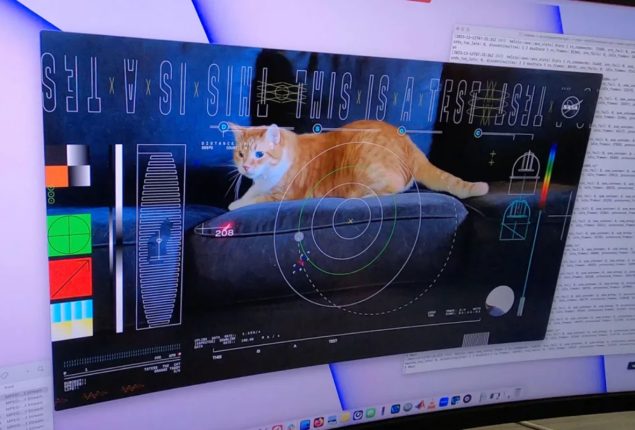Using a laser communication experiment, NASA’s Psyche mission has successfully beam a cat video, called “Taters,” from deep space.
Through the groundbreaking Deep Space Optical Communications (DSOC) project, the Psyche spacecraft, located about 19 million miles from Earth, transmitted a 15-second high-definition video clip to the Hale Telescope at Palomar Observatory, the California Institute of Technology.
Taters, the animated orange tabby cat, is shown in the video using a laser pointer to follow the elusive red dot across a couch. NASA is streaming a video from deep space for the first time ever using laser technology. The goal of the DSOC experiment is to show that high-bandwidth laser communications can be used for space exploration missions in the future, including sending images, videos, and data from far-off places like Mars.
A near-infrared laser was used to encode the video, which was sent at a distance eighty times greater than that of Earth and the moon. It took only 101 seconds for the laser to reach Earth, demonstrating its ability to transmit data at speeds 10 to 100 times faster than traditional radio wave systems used in other NASA missions.
The successful transmission marks a major milestone in the history of optical communications and demonstrates how it can revolutionize deep space data transmission. NASA Deputy Administrator Pam Melroy emphasized the importance of increasing bandwidth in order to meet future scientific and exploration goals.
The DSOC team, responsible for the laser experiment, collaborated with designers at NASA’s Jet Propulsion Laboratory to create a fun and memorable video featuring Taters. A graphics overlay showing Psyche is orbital path, the Palomar telescope dome, and information about Taters’ breed, color, and heart rate is included in the video, which was uploaded to DSOC prior to Psyche is launch.







